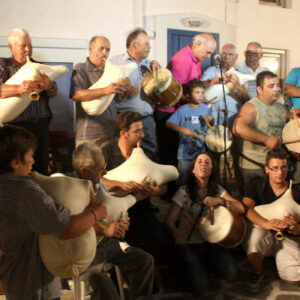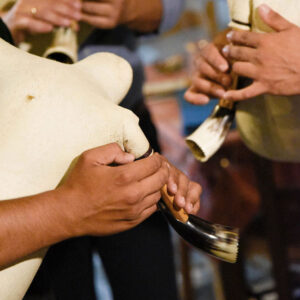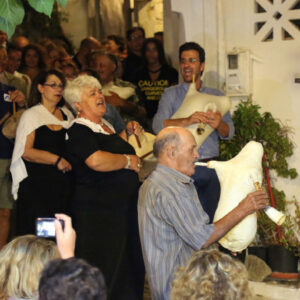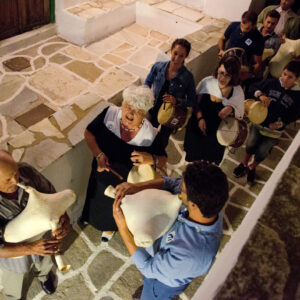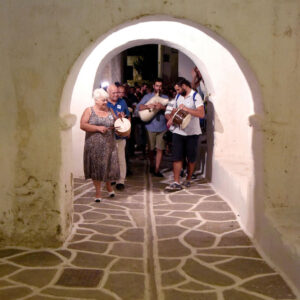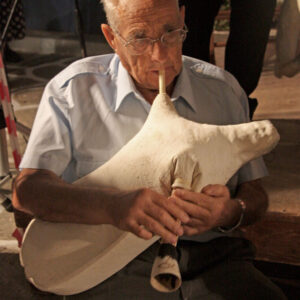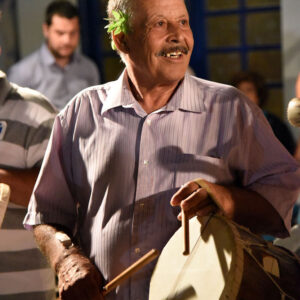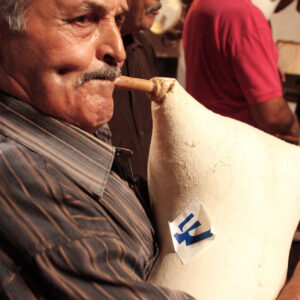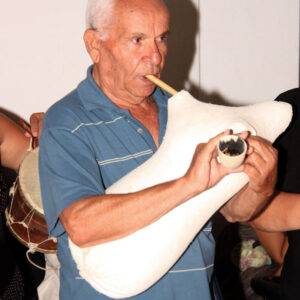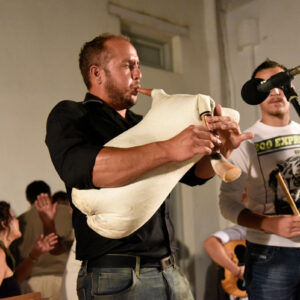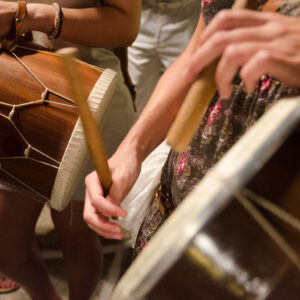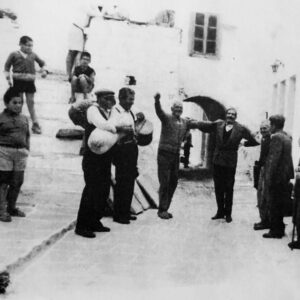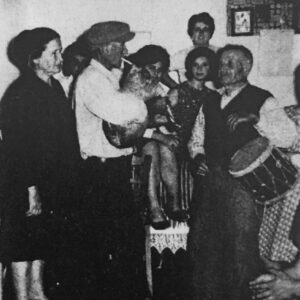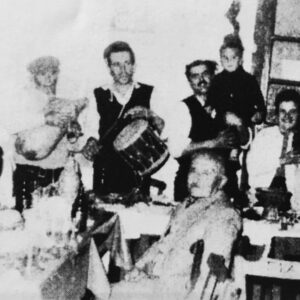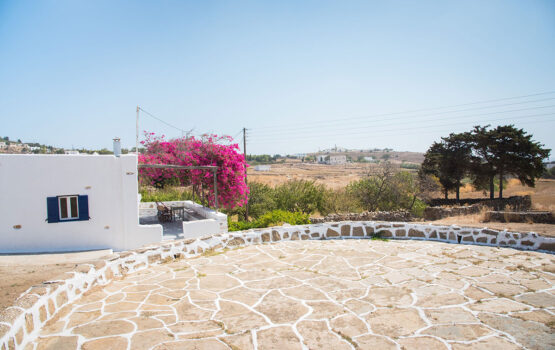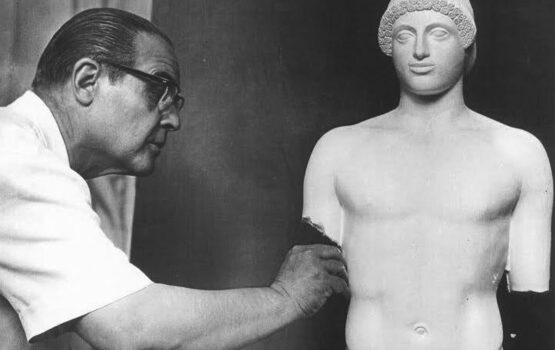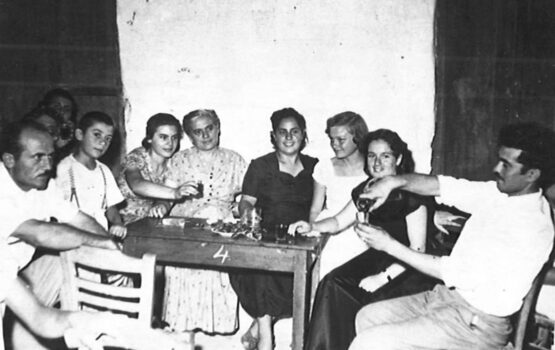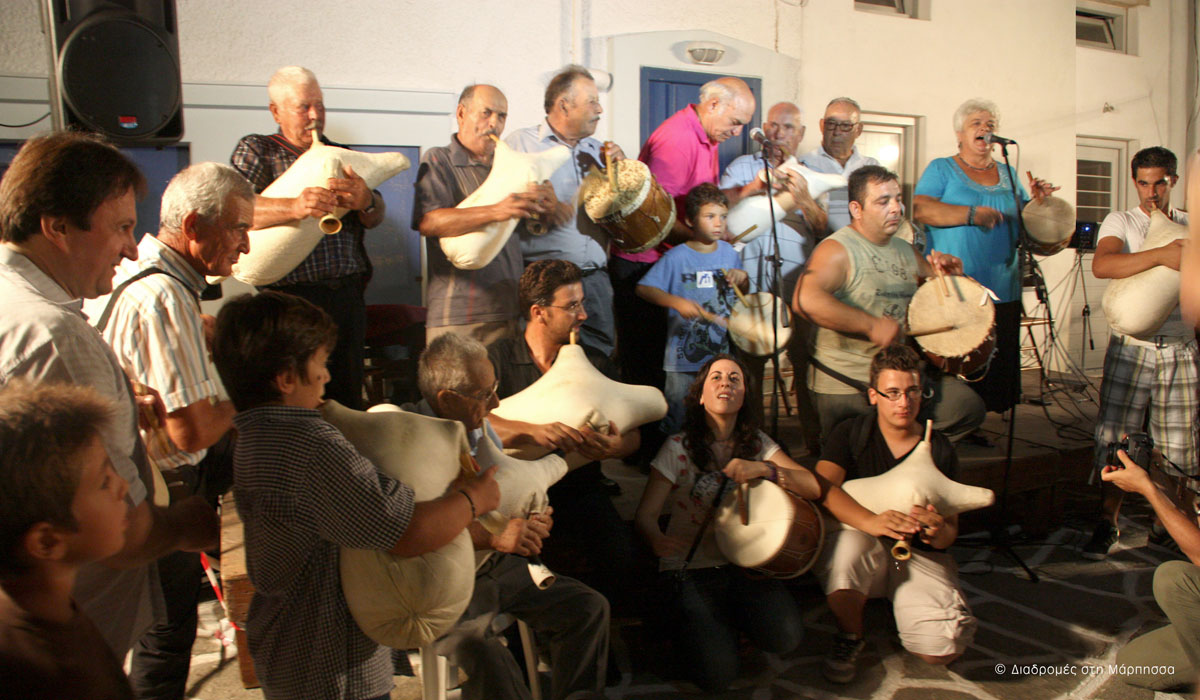
The tsambouna together with the gaida are the two types of bagpipes that are found today in Greece. The gaida is played in regions of Macedonia and Thrace, while the tsambouna is mainly an instrument of the Aegean. It is played on most islands of the Cyclades (Andros, Tinos, Syros, Mykonos, Kea, Kythnos, Paros, Antiparos, Naxos, Santorini, and Anafi), on islands of the northeastern Aegean (Chios, Samos, Ikaria, and Fourni), and on several islands of the Dodecanese (Patmos, Leros, Kalymnos, Astypalea, and Karpathos). It is also played in Crete, where it is known as ascomandoura, as well as by the Greek Pontics, who call it “tulum” or “aggeion”.
We do not know exactly when it was introduced in Greece; there exist illustrations of this instrument since the Hellenistic years, as well as a vague reference to it in a comedy by Aristophanes. The name “tsambouna” is a product of reborrowing. The Greek “symphonia” became “sinfonia” in Latin, and later “zampogna” in Italian, to return to Greece as “tsambouna”. Nowadays, instruments related to the tsambouna can be found in a wide geographical area, which comprises North Africa (Morocco, Tunisia), the Middle East (Persian Gulf countries, Iran), the Black Sea and the Caucasus (Russia, Georgia, Turkey), and India.
The manufacture of the instrument has remained unchanged for centuries. The materials used are those found in the natural environment of the tsambouna player: reeds, horns, beeswax, twine, and a young goat’s skin. Only sea salt is used for the treatment of the skin. Unlike most other musical instruments used today, in the case of the tsambouna, it is very common for the player to be the instrument’s manufacturer.
The tsambouna can produce six notes on a diatonic scale, without any accidentals. If Sol (G) is heard when closing all finger holes, then the musical notes will be Sol, La, low Si (between Si and Si flat), Do, Re, and Mi. Despite its seemingly small range, the way of processing the melodic material but also the continuous sound that the bag allows, together with the possibility to have a “polyphony” thanks to its two parallel pipes, enable the tsambouna player to enrich and ornament a simple melody to produce this sound that is so particular and dear to the islands.
In Paros, the tsambouna (or more properly tzambouna) together with the (n)toumpaki or (n)toumpi (a small double sided drum) have constituted the main orchestra for any occasion that required music. Especially in the past, the “good” instruments of the band, namely the clarinet, the santoor, the violin, and the lute were reserved for exceptional cases, such as big weddings or specific festivals throughout the year. On the contrary, the tzambouna and the toumpi were the instruments that accompanied every big, small, or improvised party in a cafe, a shepherd’s house, a wine press, or at home. Also, the tzambouna was used to welcome the New Year with songs of Agios Vassilis (Santa Claus), while it played a big part during carnival festivities. The repertoire in Paros mainly consists of dance tunes: balos, syrtos, and bourdarikos, with or without lyrics.
In recent years, a new generation of tsambouna players, together with the older ones, carries on this old and very long tradition, playing and singing with the tzambouna and the ntoumpi in a different, modern context. In a similar setting, the young players have created new circumstances and a new enthusiastic audience. Therefore, while some years ago the tsambouna was at risk of being extinct, nowadays, it is played more and more often, spreading fun with its lively and loud sound.
Nikos Tsantanis
Sources
Tsantanis, N. (2011) The tsambouna and the tsambouna player in Paros and Syros, Undergraduate Thesis, Technological Educational Institution of Epirus, Arta.

